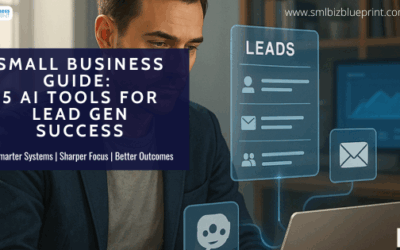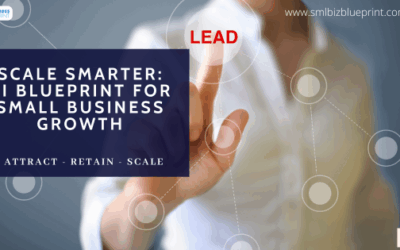Before you start building your marketing campaign it is important you understand some fundamental laws of the free market place.
The Law of The Market
“The market is where buyers and sellers of products and services meet to set prices and determine the allocation of money, labour, materials and all factors of production”.
The market is a nebulous somewhat fictitious place, which kind of exists everywhere and nowhere. It is the sum total of all of the millions of buying and selling decisions that take place every minute of every day.
In a free market, resources are allocated with complete efficiency and prices will accurately reflect supply and demand. The free market is also the most efficient for millions of people to have their needs met at the lowest possible cost.
In the absence of government intervention and control, without monopolies and oligopolies, the market is free & vibrant. Free enterprise facilitates and enables the greatest wealth and opportunity possibilities for the greatest number of people.
Step One – The Unique Selling Distinction of the Business
The easiest way to fail in business is to market something that nobody wants.
Intuitively or based on research, you as the business owner must believe that you will succeed because you are doing or plan to do something different from your competitors. This difference or your uniqueness is your U.S.D. (Some people call it the Unique Selling Proposition)
U.SD can range from pricing, packaging, distribution method, special offer through to customer service.
The two marketing issues to be considered are:
How is your business different?
Is this a difference that customers appreciate and will buy?
In order to successfully market itself your business needs to focus on its U.S.D, which makes you special and different in the market place.
You should promote it at every opportunity.
Step Two – The Target Customer/Buyer
Understanding who your Target Buyer/s or Potential Customer/s is very important for two reasons:
It can help you develop or make changes to the product or service that you offer to enable you to better match what you sell with what the buyer wants and needs.
It can help you to identify the best ways to reach customers through advertising and promotion.
Understanding your customer
You should have two types of information about the buyers:
Demographic Information such as income, education, occupation, geographic location etc.
Lifestyle Information such as hobbies, interests, beliefs etc.
By understanding the customer base you can segment the market or divide it into sections and market to the appropriate niche.
Specialisation – the important starting point of marketing
To succeed in a competitive marketplace a product or service must be specialised to perform a specific function and be excellent at satisfying a clearly defined need of the customer. It must be clear what the product is uniquely suited to do and for whom the product is designed. Products that try to be all things to all customers are doomed to be nothing to no one.
Businesses fail when they cease to specialise and do not serve a sufficient number of customers in a cost effective way. Therefore specialisation is the starting point of successful marketing. It must be clear what you are offering and to whom – it’s as simple as that!
You must always know who your specific customer is. The slightest change or shift in your customer base or customer focus can have a dramatic effect on your sales.
How successful you are in specialising will be reflected in the number of customers you have – the size of your customer base.
Market segmentation
The era of mass marketing is rapidly drawing to an end. It is essential to target specific customer groups or market segments in order to achieve significant sales. Today the most successful companies are those that have identified a specific segment of the marketplace for which they design individualised products and services to satisfy special needs, tastes, preferences and likes.
A lot of people these days call this personalization of your message either with your marketing or email campaigns but in reality identifying your target market and segmentation has been a key component of marketing since Day 1. That is what any marketing course in Univesity included in Marketing 101.
The marketplace can be divided into segments or sections based upon a number of different factors:
Demographics – age, income, education, race, marital status, household size, geographic location, profession etc.
Psychographics – personality and emotionally based behaviour linked to purchase choices.
Lifestyle – collective choice of hobbies, recreational pursuits, sports, entertainment etc.
Beliefs & value systems – religious, political, cultural and social.
Life stages – the chronological benchmark of a person’s life at different stages
You can see through proper and thorough Market Research you can accurately determine and ascertain more about your customers, their profiles & their needs.
The three keys to successful market segmentation
- Target the right market with the right product/service. This might sound terribly basic but it’s nonetheless critical.
- The ideal market segment contains those customers for whom the product’s competitive advantage is most important and impactful in satisfying their most pressing needs.
- Your best market segment consists of those who already have a clearly defined & demonstrated need for your product/service. In other words “Fish where the fish are”. The fundamental purpose of market research is to identify and segment your market so you can reach it with the greatest efficiency and at the lowest possible cost. The more accurate you are about your target customer, the more focused your marketing will be.
The great thing about today is that you can use different channels such as Facebook Ads, Google Ads, Email Marketing to check your results in 24 hours to determine how your marketing message is performing.
Concentration
Market success comes from concentrating single-mindedly on selling to those customers you have segmented as being the ones who can most benefit from your unique product or service.
Market niche & niche marketing
The best high-profit marketing strategy is to dominate a specific market niche or maximise the response from a particular market niche.
It is important to remember the 20/80 Rule: “ 20% of buyers consume 80% of the product”
The 20% is the “heavy users” of the product and can be thought of as the market niche that your business should seek to identify and attempt to “dominate” or maximise the response.
This is achieved through targeting, communicating via a two- way flow, selling and obtaining feedback on the heaviest users and potential users of your products/services.
By penetrating, dominating & maximising the response from a niche market this will enable you to achieve sufficiently large sales volume and profitability to survive and thrive.
Attributes of a niche market:
Measurable in quantitative terms
Substantial enough to generate and support a significant percentage of your sales
Sensitive to initiatives you implement
Accessible to you.
By being sensitive to the right niche you will be able to establish and maintain a “dominant” position in the marketplace over your competitors and thereby protect your market share.
As the marketplace expands and competition invariably increases and intensifies you can maintain your niche position by constantly seeking to satisfy and keep customers who really love your product/service and your level of service excellence.
Buyer Identification & Behaviour
It is imperative to know who your customer is and understand why they buy or use your products or services.
It is important to distinguish between the “customer” & the “consumer”.
They may not always be the same and their reason for buying and using the product or service may differ. Usually, the customer buys and the consumer is the end user. For example, a mother, (the customer), may purchase the baby food because of its nutritional value but the child, (the consumer), may eat it because of its taste.
There are many factors that influence a customer’s and a consumer’s buying or consuming including the following:
Culture
Demographics
Lifestyle
Psychology
Profitability – real & perceived
Advertising & promotion
Buyer/seller relationship
Other tangible & intangible benefits
Action Step 1.
Develop a clear profile of your ideal customer.
Who are they exactly? Where are they? In what sort of businesses & industries do they work?
Action Step 2.
Determine the very best way to sell your product/service to your ideal customer. How do they buy? What do they buy?
The Law of Excellence.
The market is always fair and equitable & reflects the real valuations of the customer as expressed in their buying behaviour and decisions.
In all your marketing activities never forget that the market pays excellent returns and rewards for excellent performance, excellent products and excellent service.
Customers want the very best for the very least & they prefer higher quality because higher quality promises greater satisfaction and fewer “headaches” after purchasing.
If you have high-quality ratings, both in product & service delivery and customer service, you can charge more and earn more per sale.
Therefore a commitment to and delivery of product or service excellence should underpin all your marketing activities and will be a sure strategy for achieving business success.
Develop a reputation for excellence in everything you do – you will be rewarded.
Step Three- The Competition
You now have identified your U.S.D and who your target buyers are, now you need to identify who are your competitors and understand how they operate in your marketplace.
Identifying your competitors is important because it helps you to decide the market segment you will compete in and how in fact you will compete. This will, of course, increase your chances of success, as it will reduce risk, time, resources and expenses.
You will find that the competitors are not always who you think they are.
Levels of Competition
Competitors range from direct to those who are somewhat remote but nonetheless still compete with you in the marketplace.
It is important to understand from the customer’s point of view that there are many choices.
You will need to understand your competitor’s Strengths and Weaknesses because every competitor has strengths and weaknesses which may be points of difference and points of potential advantage for your business or products.
Other information that you may wish to know about the competition is:
Their share of the market.
How they are perceived by the customers.
Their ability to deliver new & innovative products or services.
Their ability to deliver a quality product or service.
Market Research
By now you will realise that it is imperative to do some market research.
Today we live in the information & entertainment age. To be successful all businesses need accurate and timely information about their market, target buyer/s, the competition and trends. It is not enough to have the right finances, skills, business acumen and product or service.
Every business needs to gather information about:
Itself
It’s competitors
It’s customers and the marketplace in which it operates.
This information will help you to answer the “What, Where, When, How & Why” questions of your business.
As the business environment is constantly changing and the rate of change increases business operators must keep in touch with the marketplace – especially if you are starting a new venture.
The primary goal of market research is to answer your specific questions.
Much of the research carried out by larger corporations is neither affordable nor appropriate for the small business. Nonetheless, small businesses should still do some cost effective market research, which should include the following:
Conduct your own research with an affordable budget.
Analyse the research yourself.
Talking to customers and asking for their opinions and feedback is the most powerful & cost effective way to conduct your own Market Research.
Action Step 3.
Determine what market research will be cost effective & meaningful to you & your organisation.
Step Four- Positioning the Business
You now know your U.S.D, your target buyers, your competition and you have conducted your own market research. It is time to position your business in the marketplace.
Properly and effectively positioning your business to maximise your U.S.D requires Differentiation and Positioning.
The Law of Differentiation
“A product or service must have a competitive advantage or an area of excellence that enables it to stand out from its competitors”.
As we have now discussed on many occasions your product or service must be unique, better or even outstanding in some way if you are going to sell it in sufficient quantities to be successful and profitable.
Your U.S.D you can’t just be a “me too” product.
Your product or service must have special strengths or qualities that make it different from any other that competes in your marketplace.
The Law of Positioning
“The customer’s perception of you and your product or service is their reality and determines their buying behaviour with you”
Therefore it is imperative that you have a positive perception in your target buyer’s mind about you, your business and your product/service in regard to desirability, trustworthiness, integrity, excellent service etc.
Therefore with proper positioning, your product or service will be seen by customers as the product of choice.
Two Tips with Positioning Yourself & Your Business
- Presentation & Perceptions
Everything you do or neglect to do, everything the customer sees or fails to see, hears or does not hear contributes to the customer’s perception of you and your business. Therefore everything counts.
- Your individual positioning
If it is you who is selling, backing up and servicing your customer – if you do it with excellence – your customer will often pay more if it is you who is personally “delivering”.
Make your personal positioning in your marketplace so strong, so excellent, that you will be considered the standard against which competitors are compared.
Action Step 4.
Determine how your customers would describe you to others.
What words would they use to describe you personally, professionally, your level of service, your level of integrity, your level of excellence?
How would they describe your products, your service, your business and your staff?
In this way, you will determine your exact positioning in the marketplace in the eyes of your customers and potential customers.
The Law of Perception & Your Reputation
“The way that you are viewed by your customers determines your income”.
Your reputation – how you are known to your customers – what they think and feel about you – very much determines how much you sell and how much you earn.
When your customer really believes and feels that you are “working for them” in a true partnership, “win win” relationship, that you actually care about them and their special needs you will have an excellent reputation and their business. In this way, they will be raving fans and your customers will be “gold”.
When you are valued as a consultant, a counsellor and an adviser you will have transcended from salesperson to a valued friend and customers will buy more from you.
Step Five- Selection of the Distribution Strategy
Once you have developed a product or service, correctly positioned yourself, targeted your buyers, developed the pricing and packaging, you now need to select the distribution channel/s – or how your goods and services will reach the customer. And how you are going to advertise, promote and publicise them.
Distribution channels vary greatly according to the nature of your particular product and service. Options include the following:
Your own retail outlet
Independent outlets
Wholesalers.
Direct sales force
Direct mail
Telemarketing
Internet Marketing
Social Media Marketing
Action Step 5.
Devise and implement your 5 Step Process to Building a Successful Marketing Campaign




